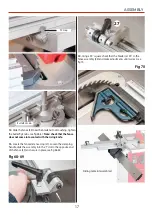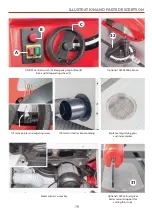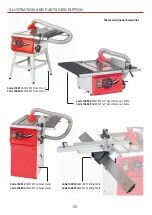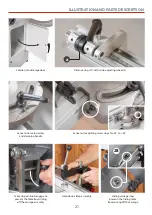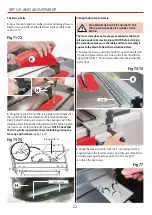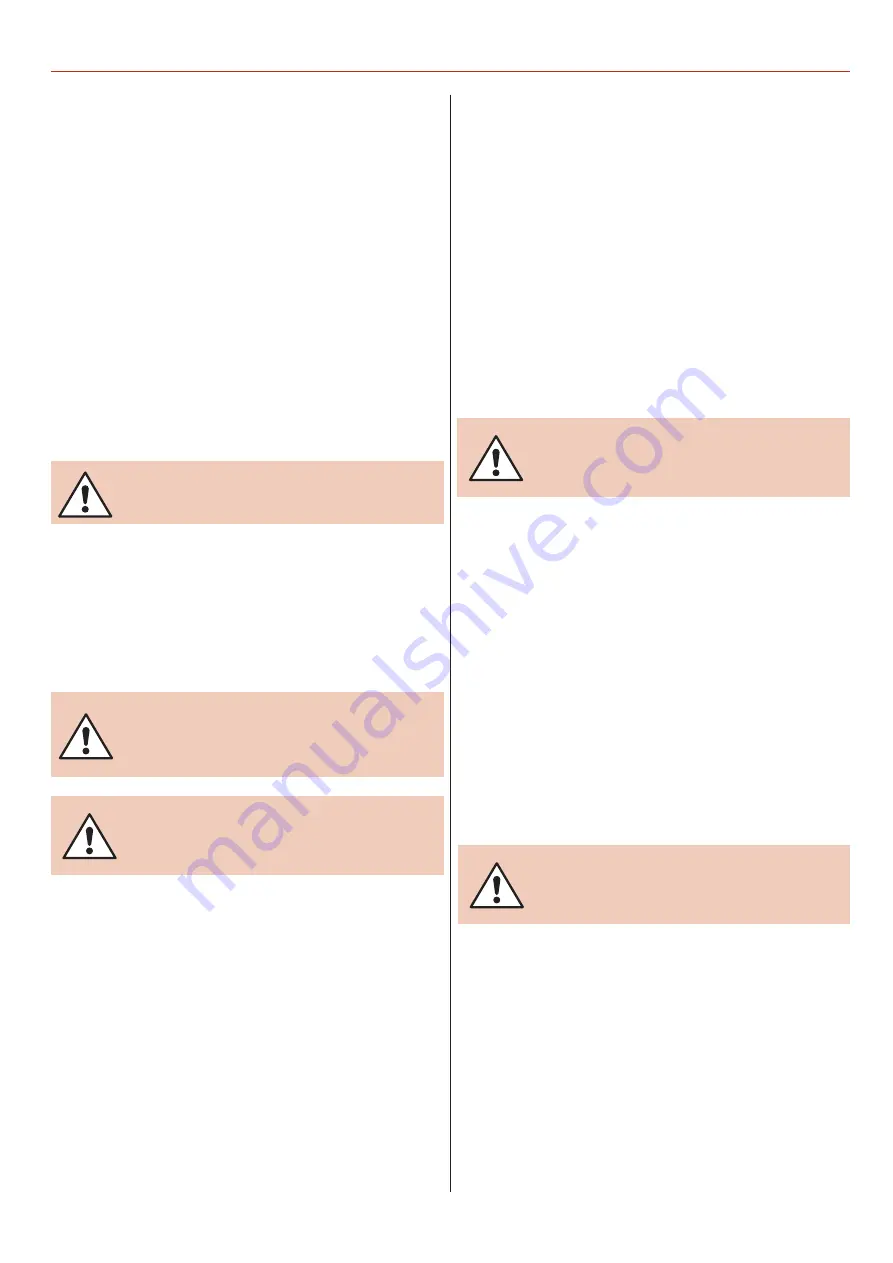
SPECIFIC INSTRUCTIONS FOR TABLE SAWS
7
Make sure the saw blade is the correct type for the job in hand.
Do not force the saw, if the saw begins to ‘stall’ you are ‘forcing
the cut’ or over working the saw.
Ensure that the saw blade is clean and sharp.
Resin build up on the blades will increase the friction of the
saw passing through the timber, and cause over heating of
the blade, blunt teeth will work harder tearing the fibre of
the timber as opposed to shearing it, also with subsequent
overheating. Both faults unnecessarily load the machine
beyond normal usage, and shorten its longevity.
Do not use blades that are deformed in any way.
Do not remove the blade guard. The design of the riving knife
on the machine will not allow for slotting or ‘blind’ grooving,
so there is no reason to remove the guard.
After switching off, never try to slow the saw down more
quickly by applying side pressure (with a piece of wood?) to
the blade. Apply the old joiner’s adage of never getting hands
within one handbreadth of the blade. Leave the machine
disconnected from the mains supply until you are about to
commence work.
Always disconnect the machine if you are leaving it unattended.
Never leave the vicinity of the machine unless the blade has
come to a complete stop.
Do not attempt to carry out any maintenance, corrective work,
setting up etc., unless the machine is disconnected from the
mains supply. If any tools have been used during setting up
procedures, make sure they are removed from the machine
and stowed safely away.
FOR YOUR OWN SAFETY NEVER OPERATE
THE TABLE SAW WITHOUT THE RIVING KNIFE
IN PLACE!
Do not remove the riving knife.
Do not use any blades that cut a smaller kerf than the riving
knife thickness. Make sure the riving knife is correctly adjusted
to the blade and is securely fastened. If the table insert
becomes damaged or broken, and will not support the timber
‘up close’ to the blade, replace it.
Do not start the saw with the work piece touching the blade.
Do not commence sawing until the blade has run up to full
speed.
CONNECT A DUST EXTRACTION
MACHINE TO THE SAW.
UNDER NO CIRCUMSTANCES SHOULD
CHILDREN BE ALLOWED IN THE WORK AREA
AND KEEP TOOLS AND EQUIPMENT OUT OF
REACH OF YOUNG CHILDREN!
WARNING! IF THE SAW JAMS!
SWITCH OFF IMMEDIATELY.
USE THE SUPPLIED PUSH STICK
WHEN CUTTING SMALL PIECES.
Do not attempt to carry out cross cutting operations ‘freehand’,
always use the mitre fence for small stuff and the sliding
carriage for larger work pieces. Do not attempt to ‘rip’ freehand,
always use the guiding facility of the rip fence.
It is perfectly acceptable to support guide and feed the timber
with your hands whilst ripping stuff of some length, however,
as you approach the blade ensure that the push stick is to hand,
and you use it.
Remember the emphasis of the ‘push’ should be between the
blade and the fence and close to the fence. Use your free hand
to support and guide the material on the offside of the saw
blade and at least 100mm away from it. If the timber does not
extend to at least 100mm to the offside of the saw blade,
the material possibly does not need guiding or supporting.
Check that there are no foreign objects e.g. old nails, screws,
small stones etc embedded in the material you are about to cut.
If necessary take a wire brush to the timber before working.
Summary of Contents for 107712
Page 29: ...EXPLODED DIAGRAMS LISTS 29 107712 AW216TS BasicTable Saw Diagram A Continues over ...
Page 31: ...EXPLODED DIAGRAMS LISTS 31 104930 AW216TS Optional SlidingTable Kit Diagram B Continues over ...
Page 34: ...EXPLODED DIAGRAMS LISTS 34 107713 AW254TS BasicTable Saw Diagram A ...
Page 36: ...EXPLODED DIAGRAMS LISTS 36 106805 AW254TS Optional SlidingTable Kit Diagram B ...
Page 39: ...WIRING DIAGRAM 39 ...

















